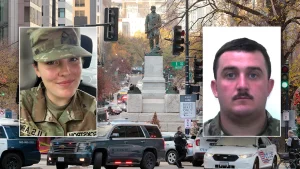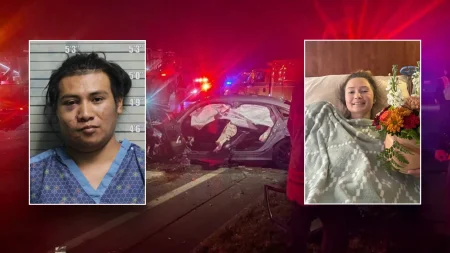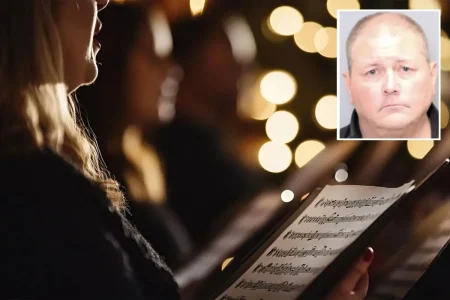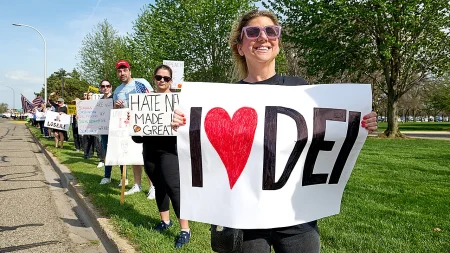A Fragile Return to Gaza City
In the quiet dawn of Saturday, as the ceasefire maintained its tenuous hold through the night, a stream of Palestinian families began their solemn journey back toward Gaza City. They moved cautiously, carrying what few possessions they had managed to keep during months of displacement, their faces showing a complex mixture of hope and dread. For many, this journey wasn’t just a return home—it was a pilgrimage to discover what, if anything, remained of the lives they had built over generations. Children walked alongside parents who couldn’t answer the simplest question: “Will our house still be there?” Some families carried small plants or seeds, symbolic gestures of their determination to restore life to whatever ruins awaited them. The roads, pockmarked with bomb craters and lined with the skeletal remains of buildings, became pathways of remembrance, each step bringing them closer to confronting their new reality.
As they approached familiar neighborhoods transformed into unrecognizable landscapes, many stopped in their tracks, overcome by the panorama of destruction stretched before them. What had once been vibrant streets bustling with vendors, children playing, and neighbors calling to one another were now silent expanses of rubble and dust. One elderly man, leaning heavily on his walking stick, pointed to an empty space and whispered to his grandson, “That was where your school stood.” A young mother clutched photographs of her former apartment building, holding them up against the skyline like a futile attempt to reconcile past and present. Others wandered through the remnants of their homes, picking through collapsed walls and shattered belongings, occasionally finding small treasures—a family photograph, a child’s toy, a wedding ring—that had somehow survived the bombardment. These fragments became precious connections to their former lives, tangible proof that their memories weren’t just dreams.
The human instinct for community revealed itself even amid devastation. Impromptu gatherings formed where neighbors recognized one another, embracing with tears and sharing what little food or water they had brought. Stories flowed between them—of escape, of loss, of unexpected kindnesses during the darkest moments. An old woman set up a small table amid the rubble of her former bakery and began brewing coffee for returning neighbors, using water she had carried for miles. “We begin again,” she said simply, pouring the aromatic liquid into whatever makeshift cups people could find. Nearby, a group of young men already started clearing debris from what had been the neighborhood mosque, working methodically despite their exhaustion. Children, with the remarkable resilience of youth, found playmates among the ruins, creating games that somehow incorporated their new landscape while adults watched with bittersweet smiles, recognizing that this generation would carry memories unlike their own.
The practical challenges of return quickly became apparent as families confronted the absence of basic infrastructure. No running water flowed from taps; electricity remained a distant memory; sewage systems lay destroyed beneath the rubble. Makeshift shelters began to appear—tarps stretched over partially standing walls, tents erected in courtyards, families claiming small spaces within the shells of buildings that could still offer some protection from the elements. Public health workers moving through the returning crowds warned of contaminated water sources and the dangers lurking in unstable structures. One doctor, setting up a small medical station in what had been a community center, explained that psychological trauma might prove as challenging as physical injuries in the coming months. “We are seeing people who haven’t slept properly in weeks, children who startle at the smallest sound, adults unable to process what they’ve witnessed,” she noted while bandaging a young man’s hand, injured while digging through the remains of his family home.
Amid the overwhelming scale of destruction, small acts of reconstruction began almost immediately. An elderly farmer carefully cleared a patch of soil in what had been his garden, methodically removing debris and testing the earth between his fingers before planting seeds he had carried with him throughout the conflict. “The soil remembers,” he told those who questioned his effort. A schoolteacher gathered children in the shade of a damaged but standing wall, using a stick to draw letters in the dust, continuing their education without books or supplies. Carpenters assessed partially damaged furniture that could be salvaged; women collected fabric from destroyed homes to create new blankets and clothing; young men with technical skills examined damaged solar panels and water pumps, identifying parts that might be repaired. These individual efforts, multiplied across thousands of returning residents, represented the first tentative steps toward reclaiming not just physical spaces but also daily routines and social connections that define community life.
As evening approached on that first day of return, the landscape of Gaza City had already begun its transformation—not through physical rebuilding, which would require resources far beyond what individuals could provide, but through the reintroduction of human presence into spaces that had stood empty and damaged for months. Cookfires appeared among the ruins as families prepared simple meals; voices and occasional laughter echoed where there had been only silence; impromptu memorials marked places where loved ones had been lost. The ceasefire that had enabled this return remained fragile, and uncertainty hung in the air alongside the dust and smoke. Yet there was also a palpable determination among those who had come back, a silent collective decision to bear witness to what had happened and to begin, however modestly, the long process of rebuilding. A teenage girl, helping her younger siblings settle for the night in their makeshift shelter, captured this sentiment as she pointed toward the stars visible through their missing roof: “At least tonight,” she told them, “we are sleeping under our own sky again.”










